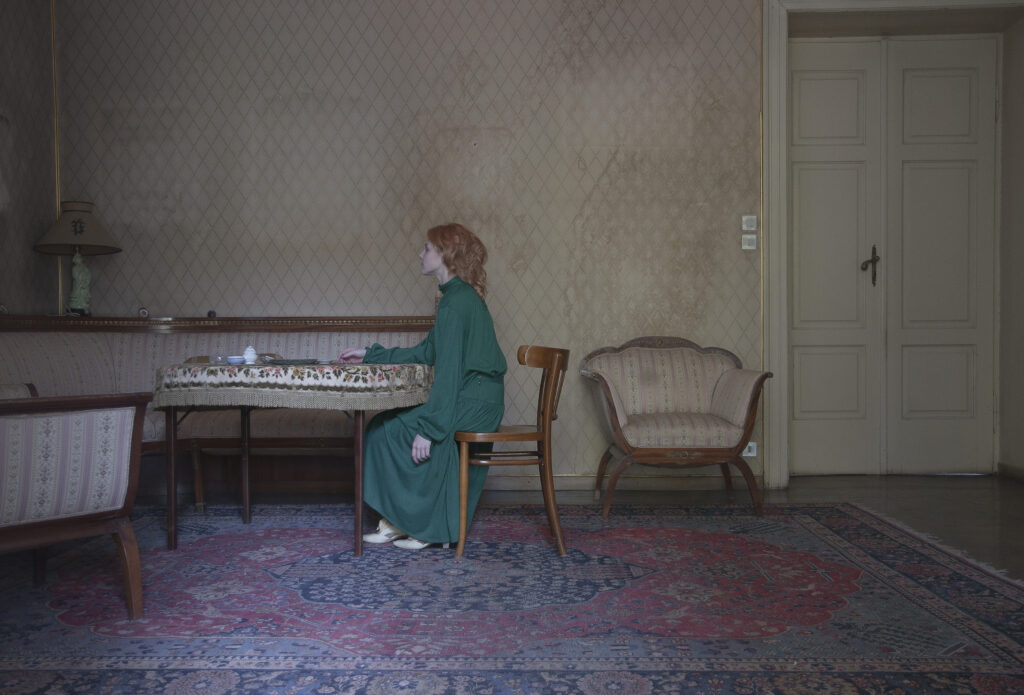Every form of creativity carries with it a delicacy and an expressive power that fulfill a cathartic purpose. In this context, the most representative local artist is Cristina Coral, who uses the eighth art with a profoundly metonymic perspective. In her works, women are depicted as both vulnerable and strong, wrapped in a constant tension. This tension is inherently feminine, an unrest that emerges even through the often uncomfortable positions of the portrayed figures. The absence of women in her images is, in fact, a fragmented presence, almost as if they are challenged to fill and dominate the space. This inner tension contrasts masterfully with the delicate colors, impeccable clothing, and beautiful faces of the protagonists. Coral has brought to Trieste, in the Mitteleuropa of the Wulz sisters, a taste for elegance and the exaltation of places.
Cristina Coral is a photographer born in Trieste, a city that has influenced her artistic vision. She started photography in 2010 and began her artistic production in 2012. Her work explores the relationship between subject and environment, with a focus on femininity, intimacy, and vulnerability. She exhibited for the first time in 2013 at the Galleria Carla Sozzani in Milan, and in 2014, she won the prestigious PX3 Paris Award with the series Do Not Disturb and was a finalist for the Hasselblad Master 2021 in the Art category Arte. She has collaborated with major institutions, and her work has been published in international magazines such as Vogue Italia, Marie Claire Maison, and Elle. She has worked with publishers like Einaudi and brands such as Durazzi Milano, B&B Italia, and Lalique.
What is your first memory of a photograph you took?
The first memory that comes to mind is an image of my family in my maternal grandmother’s garden, where I spent my summer vacations during my childhood and adolescence. It’s a group photo featuring my grandmother, my mother, and my siblings, taken by me with a “famous” instant Polaroid camera that was very popular at the time. This photograph takes me back in time, to where some of the best memories of my life come from. I have always loved my grandmother’s house; it made me feel safe and protected. A place full of love, a place that connects us through its suggestions and memories.
Your approach is often described as feminine. What do you think about when you search for a project, what drives you to create it?
Rather than feminine, it might be better to say that female figures are often part of my projects. When I think about a project, I start by searching for a space/place that, in some way, can contain my vision and my thoughts. When I find it, I recognize it instantly because it stimulates my imagination. Then, there’s always something that develops throughout the work, sometimes as a result of reflections on the work done. Photography is a deeply private act driven by mental processes, inner dialogue, but also sudden intuitions. An interaction between reason and imagination.
Rather than being defined as a photographer, you could be described as a researcher of the dichotomies that represent women. How do you identify with this description?
The female figure is the best interpreter of feelings, as well as of my vision. She is complex and, at times, contradictory; I believe she is a field of fragile and mysterious exploration, with many facets. I wanted to capture some traces of their inner dialogue.

You were born into a family connected to the world of sound and music. How much does this sonic imagery influence your photography?
My father (the composer Giampaolo Coral, ed.) certainly helped educate and enrich my sensitivity, and from a young age, he had me listen to classical music. More than the sonic imagery, I believe my father’s artistic and cross-disciplinary thinking has unconsciously become part of some of my photographic projects, such as The Other Part of Me, a project about identity and the search for identification. Music is a universal language, essential for creative growth and for stimulating inner awareness.

What is the noise, understood as a metaphorical concept, that bothers you the most in the context of your art?
The problem is always “good taste,” and when the sense of aesthetics, which has been literally “centrifuged” over the years, is lost.
It seems that you are very drawn to architecture. How does it influence your work?
The settings I choose manage to resonate with my most creative side and help create metaphysical spaces. They often represent the starting point and the key to interpreting my work.

Do you have a special place in Trieste that always inspires you and where you would like to take photos?
I don’t have a special place, but I have a very strong connection with the rooms that contributed to the creation of my decade-long project RoomStories. Accumulated places that explore the relationship between the female figure and the environment. It’s an intimate and personal project about the female world, as well as a more objective work that allowed me to create a true inventory of historical and prominent places in my city.
How do you choose the colors and settings where you shoot?
The search for the setting is almost always the starting point. The choice of model, the colors of the clothing—these are all creative acts I carry out on my own. Every detail must satisfy my sense of aesthetics and my vision.
In Camera Lucida by Roland Barthes, the punctum is that element that strikes the observer deeply. Is there a photo that you consider particularly significant, one that had a strong emotional impact on you? Can you tell us the story behind it?
I don’t have a photo that I consider particularly significant; every photo of mine somehow represents me, and my vision remains consistent. I believe that every work exists primarily for the creator, and the structure of a style is very similar to the structure of a personality. The punctum creates a very personal and intimate connection, striking not only the observer but also the author of the shot itself. The “enjoyment” of the work (in this case, photographic) by others is merely a consequence of its existence, but not everyone is able to grasp it with their imagination, and each of us observes based on our intellectual level and visual experience.
We also asked Cristina Coral what is the first photograph by another photographer that comes to mind and that deeply impacted her. Below, you can listen to Cristina’s visual thoughts. Enjoy listening!
Listen: Kukerle Coral
In the photos: Cristina Coral, portrait. Photo: Nonna Francesca and Lorenzo, Casa di Opicina. Photo from the series: RoomStories, 2014. Photos from the series: The Other Part of Me, 2015-2017 (all photos: courtesy of Cristina Coral).


